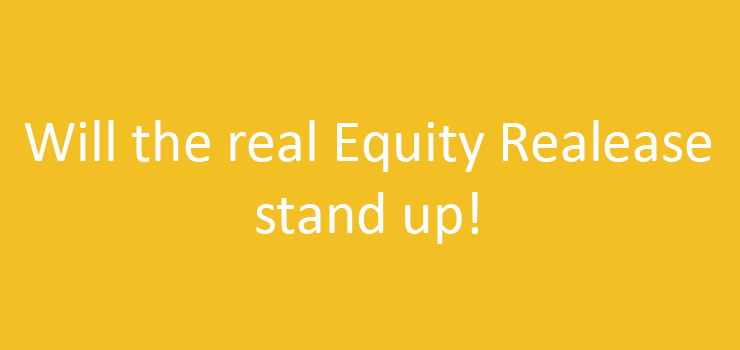If you are facing the prospect of a retirement which is underfunded, you may have considered equity release. However, in order to determine how best to release equity, you will need a basic understanding of the types of schemes and plans which are available.
The Types of Equity Release Available
In order to determine how best to release equity from your home, you will need to explore a number of different options. Equity release schemes can usually be divided into two types of product.
• Lifetime mortgage: This is similar to a conventional mortgage, with the exception that it has no fixed term. The duration of the mortgage is estimated by the equity release provider based on your potential life expectancy. The company will use statistical information based on your age, gender and state of heath to determine how long they anticipate the scheme to last.
• Home reversion plans: This type of equity release allows the home owner to sell all or part of their home to the reversion company. There is no finance to worry about and you would simply sign over ownership of your property to the company.
Both these types of plans have the advantage of allowing the home owner to retain a right of residency for the remainder of their lifetime, or until they no longer use the home as their permanent residence, for example, if they move into a holiday home or care facility. In the case of a lifetime mortgage, at this stage the property is sold to repay the balance of the outstanding loan. Any excess funds which remain after the debt has been settled are passed to the estate for distribution amongst the beneficiaries as dictated by the will and testament.
Types of Lifetime Mortgage
However, just when you were just beginning to understand how best to release equity from your home, the market place gets a little more complex, as there are several different types of lifetime mortgage. These include:
• Roll up: This type of plan is similar to a conventional mortgage but requires no monthly payment. Instead the interest which is accrued is compounded to the balance of the mortgage. The advantage of this type of plan is that it has no impact on the disposable income of the home owner. However, the balance of the loan can increase dramatically, with an estimated one hundred percent increase in balance roughly every eleven years.
• Interest only: This type of scheme is similar to a conventional interest only mortgage. The home owner makes a payment each month to cover all or part of the interest charges. However, there is no need for a repayment vehicle for the capital balance, since this is covered when the property is sold. The advantage of this type of scheme is that the home owner can have a greater control on the balance of the mortgage and protect more of the potential inheritance for their beneficiaries. However, the monthly payment can prove difficult for those on a restricted fixed income.
• Draw down: This type of plan allows for the home owner to have a draw down facility created rather than receiving a large cash lump sum. The home owner can draw down funds as and when they like up to their limit. The main benefits of this is that interest is only charged on the funds which have been drawn down and the lack of a large initial sum can assist people who are worried about losing their eligibility for means tested financial assistance and benefits. However, once the funds have been drawn down the interest can accrue rapidly in a similar way to a roll up mortgage.
• Impaired life: These schemes offer a more attractive percentage of equity release based on the impaired life potential of the applicant. People with medical conditions or serious illnesses can receive a higher amount of release based on the assumption that they will have a shorter lifespan and therefore a shorter duration of scheme.
In order to determine how best to release equity from your home, you will need to explore the options which are available to you. There are a number of online tools and calculators which can provide accurate illustrations on the amount of release you would be eligible for in addition to scheme details such as interest rates, terms and limitations. However, in order to be confident in how best to release equity, you should consult with an experienced and qualified equity release adviser. They can search the market place for the best possible deal which would be suited to your needs and circumstances.

